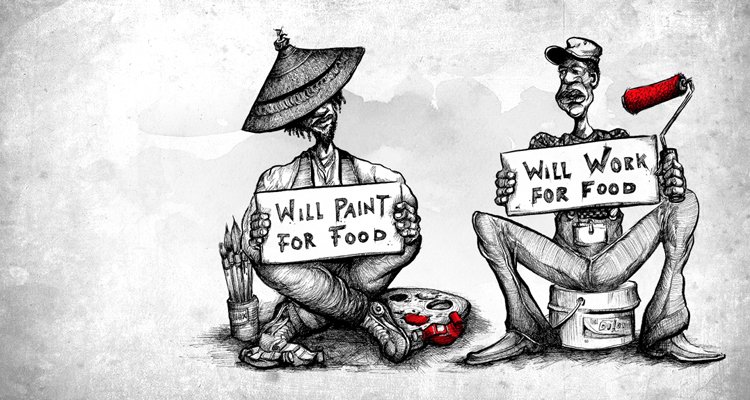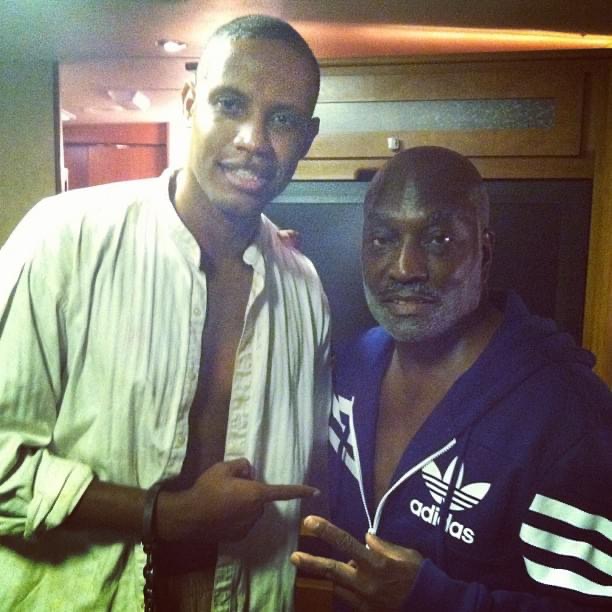
10 Jul NiteCap Journal: Why are the Arts a Caribbean Afterthought?
It’s because there are more pressing matters in the Caribbean.
At least that’s the answer given in the world according to my Uncle Lee.
“You want people to think about art when dey hungry?”, he fumed in a recent conversation on the topic. “All yuh crazy, what kind of sh— you talking?”
“Unc no society can come into its own without an established art scene,” I fired back.
There was an awkward silence after this statement, the kind that comes before the signal by which Caribbean folks dismiss you:
“Schuuuuuuuuups,” Uncle Lee sucked his teeth.
“I’ll say it again. Yuh talkin sh—,” he continued, before slapping his knee and leaning in for emphasis.
“No, no, no listen no man. When me and yuh fada was catching hell yuh tink we had time to write poem?! Dem bad boy and dem dung in deh islands need jobs, not a poetry class.”
At this point we shifted the conversation to the recent home invasions in Trinidad and murders on St. Croix, the aforementioned more pressing matters.
Growing up poor in Trinidad, my Uncle Lee like many folks from that era considers art a luxury, a pastime enjoyed by the rich after you’ve crossed over to thriving from merely surviving. It’s why many Caribbean parents push their kids to become a nurse, doctor, lawyer, accountant or engineer. My loved ones thought I lost my mind when I majored in the liberal arts.
Petah gon do wha? He say he goin college to write. Instead he go to be a doctor and make some real money he say he gon write a book. Well sah, yuh know I heard all dem writers does become ante man right?!
Trust me, I’m fully aware that desperation often leaves no room for creative expression as I’ve gone to bed hungry before having vanquished my resources in pursuit of my artistic dreams.
However, no amount of money or employment opportunities can mend a broken spirit. Void of the soul food art provides we’ll become calculated corpses like those aberrations of humanity who colonized us. Extensive research compiled by organizations like Americans for the Arts have long showed the positive role integrating arts education has on decreasing anti-social behavior and improving overall mental health.
The back and forth with Uncle Lee made me reflect on a conversation I had with Jamaican author Colin Channer who hosted a film screening of Paradise Discovered: The Unbreakable Virgin Islanders at Brown University for the 11th stop on our Unbreakable tour back in 2019.
“You been to Trenchtown, now yuh can see the pain from which deh music came from and why it can be so harsh, a pure sufferation ting in ah Jamaica,” exclaimed Channer. “The larger world has been introduced to our sound through our music thanks to the likes of Bob and others, but now through our literature and film they can get the language and story…seen?”
I weighed the gravity of Channer’s words and the fact that every leading society has emboldened itself to a unique identity developed and shared with the world via the arts. Understanding how essential artists are to society, Lorenzo de’ Medici of the Medici banking family spent enormous amounts supporting Leonardo da Vinci, Sandro Botticelli, and Michelangelo Buonarroti. His patronage helped to inspire the Renaissance which led us out of the Middle Ages and into modern life or so the story goes.
Caribbean artists would be hard pressed to find a patron the likes of the Medici family as local leaders have historically shied away from investing in the arts due to fear of rebuke from the likes of my uncle. Given the pittance most are paid and still dare to create, I’d argue our region has some of the world’s purest artists. Geographically and culturally isolated from the mainstream publishing houses, art houses and Hollywood studios most have had to rely on grassroots efforts.
I’m always inspired to see Grenadian author David Ambrose and others promoting their books on their Facebook pages.
However, the lack of support has led to an imported artistic community curated by those from the outside with the resources to develop art, making our homegrown artists foreigners in the local landscape and even worse – beggars for artistic real estate.
Yes, these visitors will incorporate the local inspiration into their work, but how can they harness the authenticity to create that which doesn’t derive from their root?
As the age-old saying goes, “He who feels it knows it”.
Art is no different.
So, if art in its purest form is the mirror by which we see ourselves whose reflection are we seeing and do we like what we see?
I’m tired of seeing the one in commercials with some barefoot guy dawning dreads wearing a flower decorated shirt singing:
“Welcome to our islands where the vibes are always right!”
Sheesh we get it. What else can we do down there besides the beach and drink booze.
I’d argue that if the youngsters causing our islands’ violent crime rate saw depictions of themselves as heroes and heroines depicted in paintings and films the crime rate would go down. Now they’re forced to find their image as a gun toting rapper in a drill music video against the backdrop of dilapidated public housing building thousands of miles removed from the paradise they were blessed to be born in.
In fact, Caribbean people have always been trying to find themselves in unfamiliar art which has primarily been via the African American lens by default.
I remember my experience playing the role of Leo Edwards in the film The North Star alongside Clifton Powell, Lynn Whitfield, John Diehl and Keith David.
Watching Powell in his trailer reenact his legendary Pinky character is one of my take-to-the-grave moments. While filming my scene I had trouble reciting the lines which I felt disconnected from given the subservient tone and dialect, so director Thomas K. Phillips let me improvise my lines.
I know we supposed to be acting, but I’m not calling anyone “Massa” and if these folks call me a nigger one more time, just one more time. I think they’re enjoying this. They ain acting.

Shot in Quaker country in the rolling hills north of Philadelphia, the period film centers around the Underground Railroad and a newly settled free town of former slaves and educated Blacks. Residents of the real-life Newtown, PA, welcomed the production as a majority of the props used in the film were relics and heirlooms passed down through generations. Even in that quaint little town the folks knew the importance of owning and preserving their story through art.
These days, I think about the current Renaissance underway in the Caribbean as a new generation of artists are using social media and the internet to share their work. I’ll go further in saying that the USVI is a leader in this movement and I myself an architect. Led by an emergence of dynamic Virgin Islands millineals who’ve recently hosted film festivals, book signings, fashion shows and art-exhibits this movement promises to reinvent our islands while garnering support from private patrons and local government entities.
In fact, the USVI Department of Tourism, USVI Economic Authority and UVI RT Park have also invested in Paradise Discovered: The Unbreakable Virgin Islanders 2.0. Furthermore, efforts are underway to create our nation’s premier cultural arts museum curated by former lawmaker and historian Myron D. Jackson who himself is featured in Unbreakable 2.0.
As for my Uncle Lee, making him a believer goes back to the bottom line:
“Now, I don’t know about dis art ting you speaking about, but films look like good business. The boy 50 Cent and Tyler Perry doing well with that.”
We welcome your feedback to our NiteCap Journal series so feel free to leave a comment below and read our previous entries.

D tree
Posted at 03:11h, 18 JulyWorld wide problem. Art is shared. Art comes from pain. Without struggle no art.
chill out.